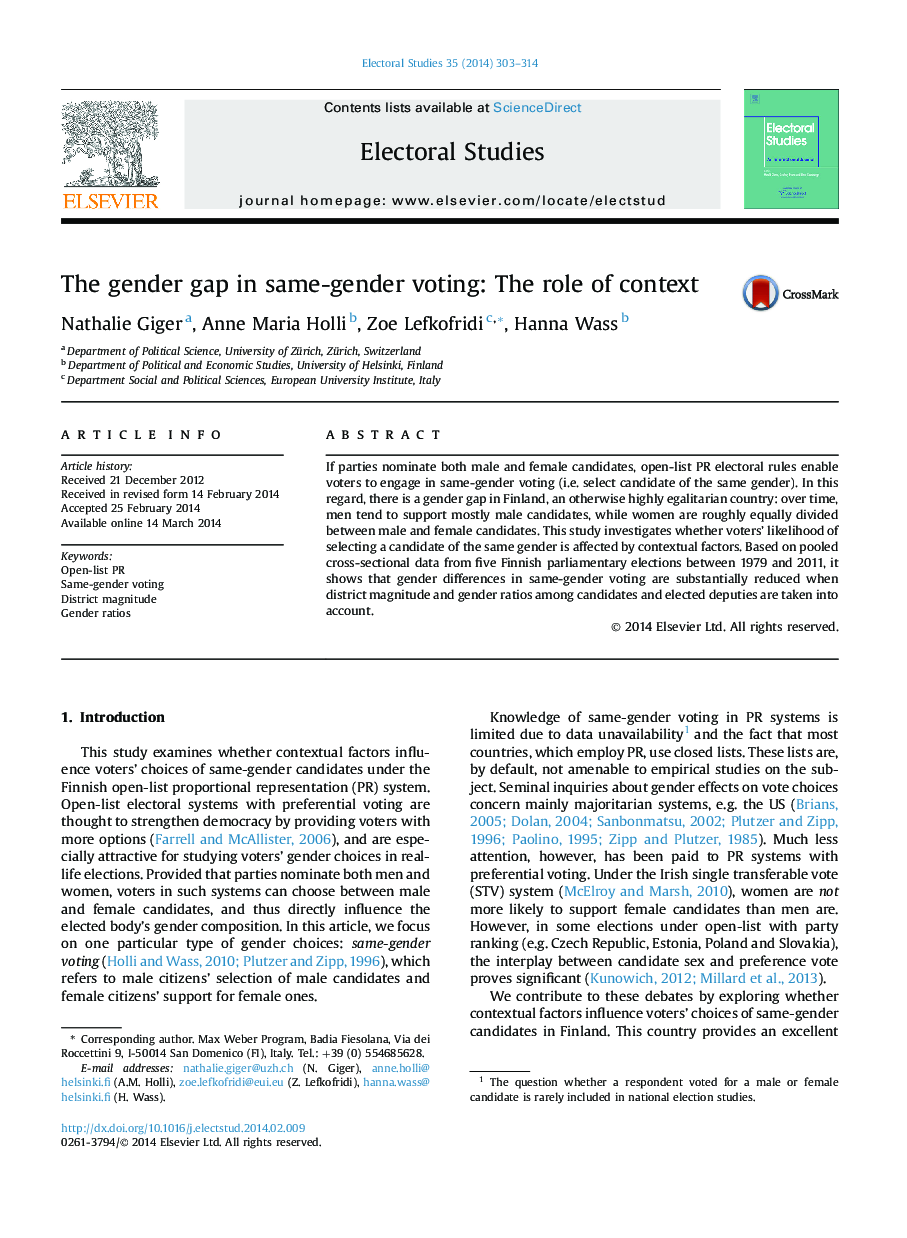| Article ID | Journal | Published Year | Pages | File Type |
|---|---|---|---|---|
| 1051791 | Electoral Studies | 2014 | 12 Pages |
•Same-gender voting (i.e. selection of same-gender candidates) in open-list PR.•We examine Finland, where there is a gender gap in same-gender voting.•We estimate a multilevel model to capture the effects of contextual factors.•Higher district magnitude decreases men's and increases women's same-gender voting.•Smaller candidates' and elected deputies' gender ratios narrow the gender gap.
If parties nominate both male and female candidates, open-list PR electoral rules enable voters to engage in same-gender voting (i.e. select candidate of the same gender). In this regard, there is a gender gap in Finland, an otherwise highly egalitarian country: over time, men tend to support mostly male candidates, while women are roughly equally divided between male and female candidates. This study investigates whether voters' likelihood of selecting a candidate of the same gender is affected by contextual factors. Based on pooled cross-sectional data from five Finnish parliamentary elections between 1979 and 2011, it shows that gender differences in same-gender voting are substantially reduced when district magnitude and gender ratios among candidates and elected deputies are taken into account.
